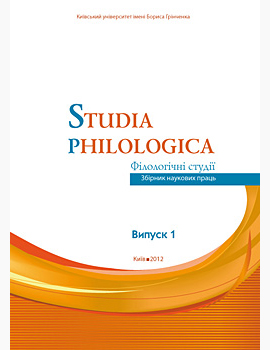Complex complement constructions in Early Modern English
DOI:
https://doi.org/10.28925/2311-2425.2018.11.4Abstract
The paper deals with the main peculiarities of syntactic compatability within matrix volitional verbs finite complements of complex constructions in the framework of generative syntax within the Minimalist Program of N. Chomsky using the leading transformational rules such as projection principle, a-movement. The article outlines the ways of that/wh-correlatives origin inside subordinate relationship in the head-specifier location in [Spec, CP] of the functional projection CP. We postulate generation and contact location of embedded finite clauses directly after principal clauses by way of that/wh-element movement up left where its landing site occurs to be the clausal complement specifier [Spec, CP] occupying the head place of the functional projection CP which c-commands over the whole complement and its internal constituents in the node of a complementizer phrase. The article provides special fundamental arguments for proving that CP forms an independent complementizer phrase for expanding of the the matrix verb VP lexical projection function. The paper considers main grammatical categories and syntactic functions of subordinate finite clauses embedded in constructions of higher level as indirect statements, directives or questions in the function of a direct object and a complement. Special attention is focused on defining finite sentencial complements types as declarative and interrogative ones depending on the semantics of the principal verbs of willing. Namely, we distinguish subordinate type clauses as: 1) a declarative type that actualizes indirect statements (hope, intend, resolve, persuade, promise, warn) and indirect directives (ask, beg, charge, appoint, require, command, instruct, order) of volitional predicates; 2) an interrogative type that realizes indirect questions of ask, advise, choose, promise, instruct predicates. The choice of a complementizer also influences on the grammatical category of an embedded sentencial complement. Hereby, conjunction that preferably introduces a declarative type whereas wh-correlative points to the interrogative categorial function of a finite content clause.


